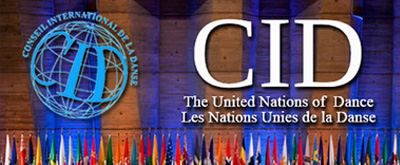Blogs
Natyotpatti
The Natyashastra, written between 2nd century BC- 2nd century AD, is probably one of the earliest and certainly one of the best Sanskrit treatises on Indian Dramaturgy. Traditionally, its authorship is ascribed to sage Bharata. But, according to Adya Rangacharya, it is believed to have been written by several scholars who wrote about the practices […]
Rasa Theories
All the writers who wrote about Rasa admit that Bharata’s Dictum or Sutra, “Vibhava anubhava vyabhichari samyogad rasanispattihi” defines the scope and nature of Rasa realisation. It is the pivot on which all the latter theories move but the terms Samyoga and Nishpatti, in the sutra were variously understood and interpreted by various later authors. […]
Western Art Theories
Art is one of the cultural activities of man through which the artiste brings his ideas, values, feelings, aspirations and reactions to life. The generic purpose of art is to provide aesthetic experience and enjoyment to the recipient. Art give outlet to the artist himself to reveal and express his innermost aspirations, feelings, sentiments and […]
DASARUPAKAS
In the 20th chapter of the Natyasastra, Bharata describes the 10 types of plays under the heading ‘Dasharupavikalpan’. Here, the term ‘Rupaka’ is used in the context of visual representation. Hence, in Bharatha’s theory, the term Rupaka is equivalent to drama and not to the current popular term ‘naatak’ which according to him is one […]
Atodhyas – Musical Instruments
“Atodhya Vadya,” as mentioned by Bharata in Chapter 28 of the Natya Shastra, categorizes musical instruments into four types: Tata (stringed), Avanaddha (percussion), Sushira (wind), and Ghana (solid resonators). This classification, based on acoustic principles, highlights the diverse and intricate nature of ancient Indian musical traditions. Tata– Included all stringed instruments, mentioned in Chapter 29 […]
Rasa, Bhava, Vibhava, Anubhav, Sanchari And Sthayi Bhava
ABHINAYA TECHNIQUES IN BHARATA’S NATYASHASTRA The Natyashastra of Bharata consists of thirty – six chapters, out of which chapters 6 and 7 relate to “rasas” (sentiments) and “bhavas” (emotions), 8 to 14 discuss Angigaabhinaya, 15 to 22 deal with Vachikaabhinaya and chapter 23 talks of Ahaaryaabhinaya. The Sanskrit word “rasa” fundamentally means ‘taste’ or ‘flavour’ […]
The Natyasastra
The art of Music and Dance, which was well developed during Vedic age itself, has been systematized by Bharata in his Natyashastra. He condensed and codified the necessary laws which govern music, dance and drama. Not only these three but all that are essential to the authors and actors like the knowledge of grammar, prosody, […]
Banis or Styles in Bharatnatyam
All the different styles of Bharatnatyam stem from the Natya Sastra and follow the prescribed pattern of the Sadir Katcheri evolved in the 18th century starting with the Alaripu and concluding with the Tillana. The differences, if any, are very slight and purely regional in flavour depend upon the environmental conditioning of that particular area […]
Abhinaya Darpanam
“Abhinaya Darpanam” is a Sanskrit treatise dedicated to Indian classical dances, offering a comprehensive exploration of dance movements and expressions. The entire text is composed in a poetic form known as ‘padya,’ primarily employing meters such as ‘Anushtupa chhand,’ ‘Sragdhara,’ and ‘Shardulvikridit.’ This format facilitates the method of ‘memorizing and recitation’ for knowledge acquisition, aligning […]
The Importance of Dance in Kalidasa’s Works
Kalidasa, the renowned poet-dramatist of ancient India, left a lasting mark on the association between literature and dance. His many works offer exquisite insights into the art of dance, aligning perfectly with the principles of the Natyashastra. This introduction unveils Kalidasa’s deep understanding of dance, weaving together the elaborate relationship between his literary brilliance and […]


